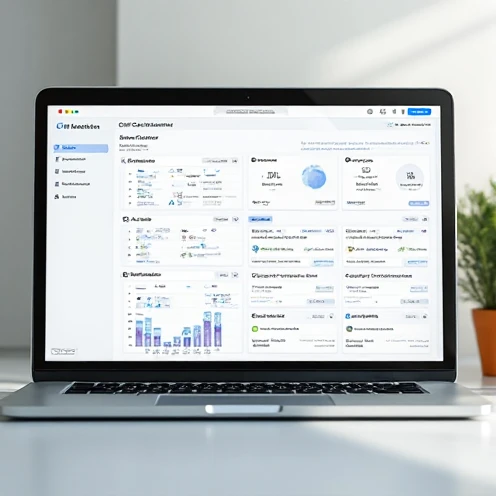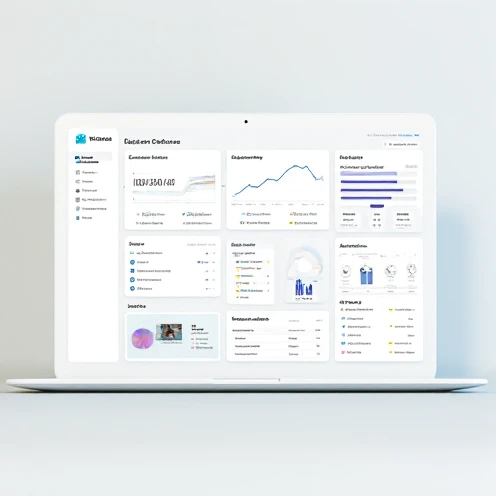The Heart of Modern CRM
Customer Relationship Management (CRM) is at the core of every successful business today. In an era where customer expectations keep rising, companies need advanced tools that ensure seamless communication and personalized service. One of the most effective solutions to achieve this is Inbound Contact Center Software.
By combining inbound customer service solutions with CRM, businesses can deliver faster responses, track customer journeys, and build stronger relationships. This integration not only improves efficiency but also creates a consistent experience that customers value and remember.
Iklan Google AdSense
Understanding the Basics of CRM
CRM is more than a platform; it is a strategy that focuses on managing interactions across the customer lifecycle. At its foundation, CRM helps businesses store data, track engagement, and deliver targeted support.
Over time, CRM evolved from manual record-keeping into intelligent systems that incorporate automation, artificial intelligence, and real-time analytics. This evolution empowers organizations to anticipate customer needs and provide service at the right time and through the right channel.
Inbound Contact Center Software: Why Businesses Depend on Inbound Contact Centers
Customers today expect immediate responses. Inbound Contact Center Software is designed to handle incoming calls, chats, and emails efficiently. Unlike outbound systems, inbound centers focus on receiving and managing customer requests in real time.
By integrating with CRM, agents can see detailed customer profiles instantly. This capability reduces the need for customers to repeat information and makes every interaction smoother. It is a solution that balances customer satisfaction with business productivity.
How CRM Integration Enhances Customer Experience
When inbound centers work hand in hand with CRM systems, the customer experience transforms dramatically. Agents can personalize their approach by accessing data such as purchase history, past complaints, and preferences.
This integration also helps organizations move from reactive to proactive service. For example, reminders for product renewals or follow-ups can be automated, showing customers that the company understands and values their needs.
Essential Features of Inbound Contact Center Software
Choosing the right inbound contact center platform requires attention to key features. Intelligent call routing ensures that customers connect with the right agent instantly. Real-time dashboards allow managers to monitor performance and identify areas for improvement.
Other essential features include ticket automation, self-service portals, and omnichannel communication. These tools ensure businesses can handle high volumes of customer inquiries without compromising quality.
Increasing Productivity with Automation
Automation plays a major role in modern CRM and inbound contact centers. It eliminates repetitive tasks, such as manually creating support tickets or sending acknowledgment emails.
With workflows running automatically, agents can focus on solving complex problems that require human empathy and expertise. This combination increases productivity and ensures better customer service outcomes.
Inbound Contact Center Software: The Growing Role of AI in CRM and Contact Centers
Artificial Intelligence (AI) is no longer a futuristic concept; it is already shaping customer service. Inbound contact centers equipped with AI use chatbots, virtual assistants, and predictive analytics to deliver smarter service.
AI tools analyze conversations, detect sentiment, and suggest solutions to agents. This not only speeds up resolution times but also improves overall customer satisfaction by offering personalized interactions.
Measuring Success in CRM and Inbound Centers
Success must be measured to ensure long-term growth. Key performance indicators (KPIs) such as first call resolution, average response time, and customer satisfaction scores reveal the impact of inbound contact centers.
CRM reports provide insights into customer behavior, loyalty, and lifetime value. Businesses that consistently analyze these metrics can adapt their strategies, refine processes, and enhance overall service quality.
Common Challenges and Their Solutions
Adopting CRM and inbound contact center technology is not without challenges. One common issue is employee resistance to new systems. This can be solved through proper training, clear communication, and ongoing support.
Another challenge lies in maintaining data security and compliance. With strict regulations around customer data, businesses must invest in secure platforms and continuously update their systems to protect customer trust.
Future Trends in Inbound Contact Centers and CRM
The future of inbound centers is strongly tied to cloud solutions, advanced analytics, and AI-driven personalization. Cloud-based platforms provide flexibility and scalability, making it easier for businesses to adapt to changing demands.
Additionally, integration with emerging technologies like the Internet of Things (IoT) and predictive modeling will further enhance the ability to anticipate and meet customer needs. Companies that adopt these trends early will gain a strong competitive advantage.
Benefits for Small Businesses Inbound Contact Center Software
Inbound Contact Center Software is not only for large enterprises. Small businesses can also use it to compete effectively. With automation and smart routing, even small teams can deliver outstanding customer support.
Cloud-based options make the technology affordable, allowing startups and SMEs to adopt professional systems without heavy upfront investments. This levels the playing field and helps smaller organizations scale quickly.
Building Stronger Relationships through Technology
Inbound Contact Center Software integrated with CRM has become a necessity for businesses aiming for long-term success. It helps organizations deliver fast, personalized, and efficient service while boosting overall productivity.
By investing in these tools, companies not only improve customer satisfaction but also strengthen trust and loyalty. In today’s competitive market, the combination of inbound contact centers and CRM is the key to sustainable growth.
Iklan Google AdSense


